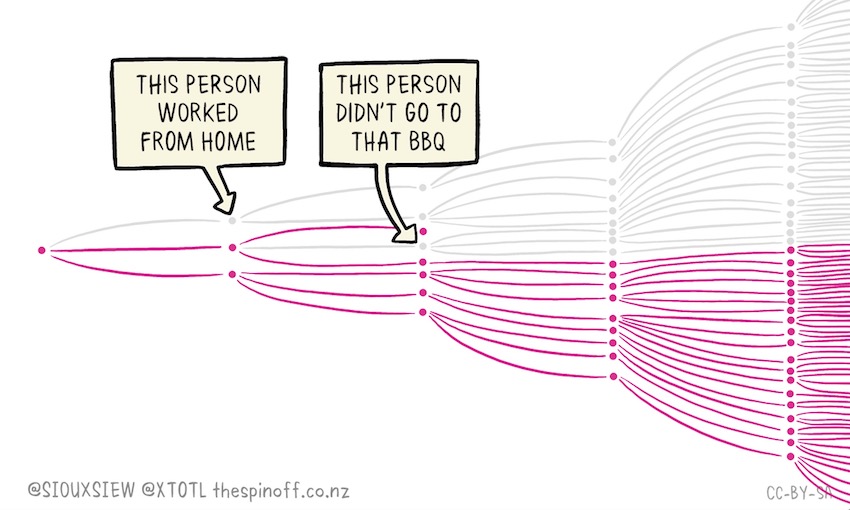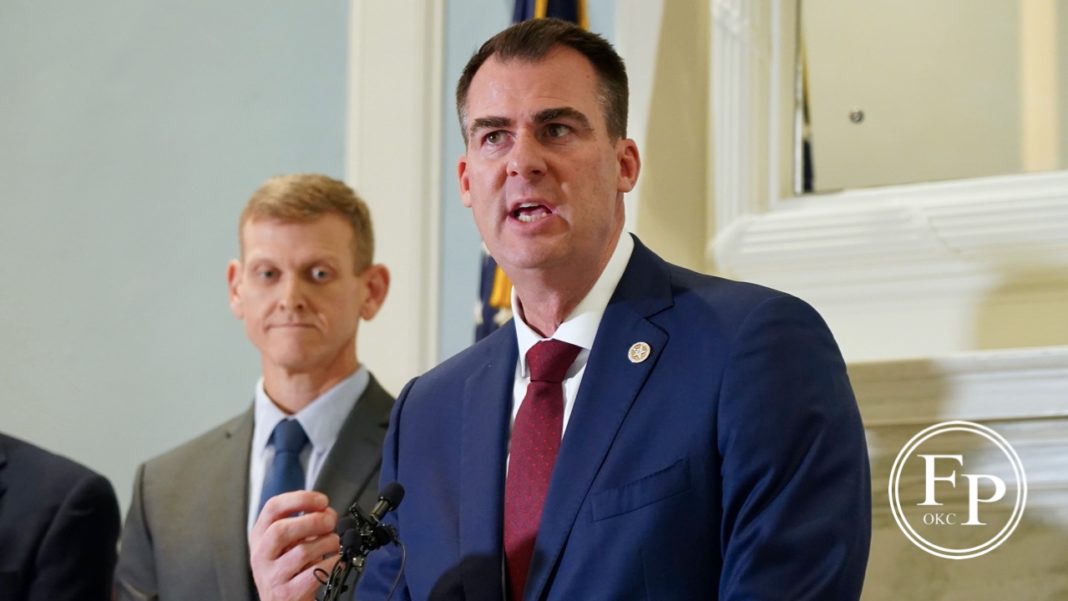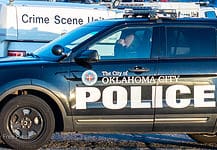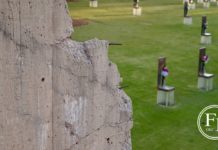Last Updated on April 17, 2020, 10:49 AM | Published: March 25, 2020
On Tuesday, Governor Stitt declared that all non-essential businesses would be closed in counties with community spread of COVID-19, including Oklahoma County.
Examples of non-essential businesses are hair salons, gyms, theaters, massage parlors, tattoo parlors, museums, etc.
The counties are Canadian, Cleveland, Custer, Garvin, Grady, Jackson, Kay, Logan, Mayes, McClain, Muskogee, Noble, Oklahoma, Pawnee, Payne, Pontotoc, Tulsa, Wagoner, and Washington.
The executive order can be read in its entirety HERE.
Tightening restrictions
The executive order tightens restrictions on gatherings and other environments where the deadly new COVID-19 disease can be spread.
Oklahoma City Mayor David Holt’s proclamation issued the same day essentially matched the governor’s.
This came after Holt’s original March 15 state of emergency declaration for Oklahoma City due to the confirmed local spread of Covid-19.
Since the 17th all bars, gyms, movie theaters, and dine-in restaurants have been closed to the public in an attempt to slow down the spread of the virus and city residents have been asked to practice social distancing.
The CDC website page Stitt’s office cites for specific reference on which businesses are considered essential and non-essential is HERE. A supplemental document defining which businesses will be considered essential is HERE.
And, the situation has grown deadlier for Oklahoma County. Wednesday, the mayor confirmed that Oklahoma County had its first two deaths from COVID-19.
What is “social distancing”?
Even with more businesses closed, residents of Oklahoma City will find themselves in situations where transmission could be possible if those in the environment do not take care.
Social distancing means to keep a safe distance from others in an attempt to prevent infection from being passed from one to another. We know that Covid-19 is spread by coughs and sneezes from one person to another, and the CDC has recommended staying 6 feet away from others to help minimize risk.

The CDC also recommends working from home if possible, washing your hands frequently and staying home completely if you feel sick. If you believe you have symptoms of COVID-19 you should call your primary care doctor first and follow their instructions.
“Keep in mind that most further steps will require your buy-in. In a free society, the reality is that only you can force yourself to shelter in place. I wield a pen, not an army,” said Mayor Holt in a press conference on Tuesday.
“I will need you to be my partner in any such effort. In exchange for your trust, I assure you I will not issue any proclamation without the unified voices of our public health community telling me to do so.”
Exponential Growth
Even during social distancing, the infection rate will increase, although at a slower rate which keeps hospitals from becoming overwhelmed. While Oklahoma City has multiple hospitals, the kind of specialized care that a person with a moderate to severe case of Covid-19 may need can be limited.
National health advocates and local health experts agree that social distancing is the best way to slow infection rates to keep hospitals able to treat everyone.
Without social distancing the infection rate tends to double about every 3 days regardless of population, we know this from looking at other countries and comparing their response to their results. Countries that do nothing tend to overwhelm their health systems leading to many more deaths than communities who are able to slow the infection rate by reducing interactions that are high risk.
“COVID-19 created this crisis, not us. And like it or not, there is no safe harbor where COVID-19 spares us our economic toll. The only choice we have is how many people we let it kill along the way,” said Holt.
“Taking no action would have led to the same economic result. The virus would have spread unchecked, the death toll would have mounted, and the businesses would have closed anyway. But we chose the path of saving lives, and in the end, it will have made a difference.”
Embracing technology
Whether it is live streaming a meeting, making a phone call, or just updating social media, many are finding new ways to interact with technology instead of in person.
“For extroverts like me, this can be excruciating. I’m grateful to have the ability to work from home, and glad I have a home to work from,” Oklahoma State Representative Forrest Bennet told Free Press in a phone call. He represents HD 93 on the south side of Oklahoma City.
“And I recognize I’m privileged to have these comforts and conveniences. But we are a socially-connected society and the absence of the weekly happy hour with an old friend or lunch with coworkers can take a toll on mental health.”
Bennett has a reputation in the city for being available and eager for his constituents to stop by and chat but the CDC recommending people not gather in groups he has embraced technology as a way to remain accessible to his community.
“Plenty of people have made a habit of doing something at home to connect with the world outside. Musicians are playing live shows from their living rooms, Sir Patrick Stewart is reading sonnets every day, and even I am doing “Social Distancing with Forrest” videos on Instagram.” Bennet said.
Reporter covering the intersection of local politics and Oklahoma families. || Intellectual magpie, and hoarder of datasets. I ❤️ OKC. || When not writing Joey can be found researching light pollution in Oklahoma and visiting Oklahoma schools with her portable planetarium.










